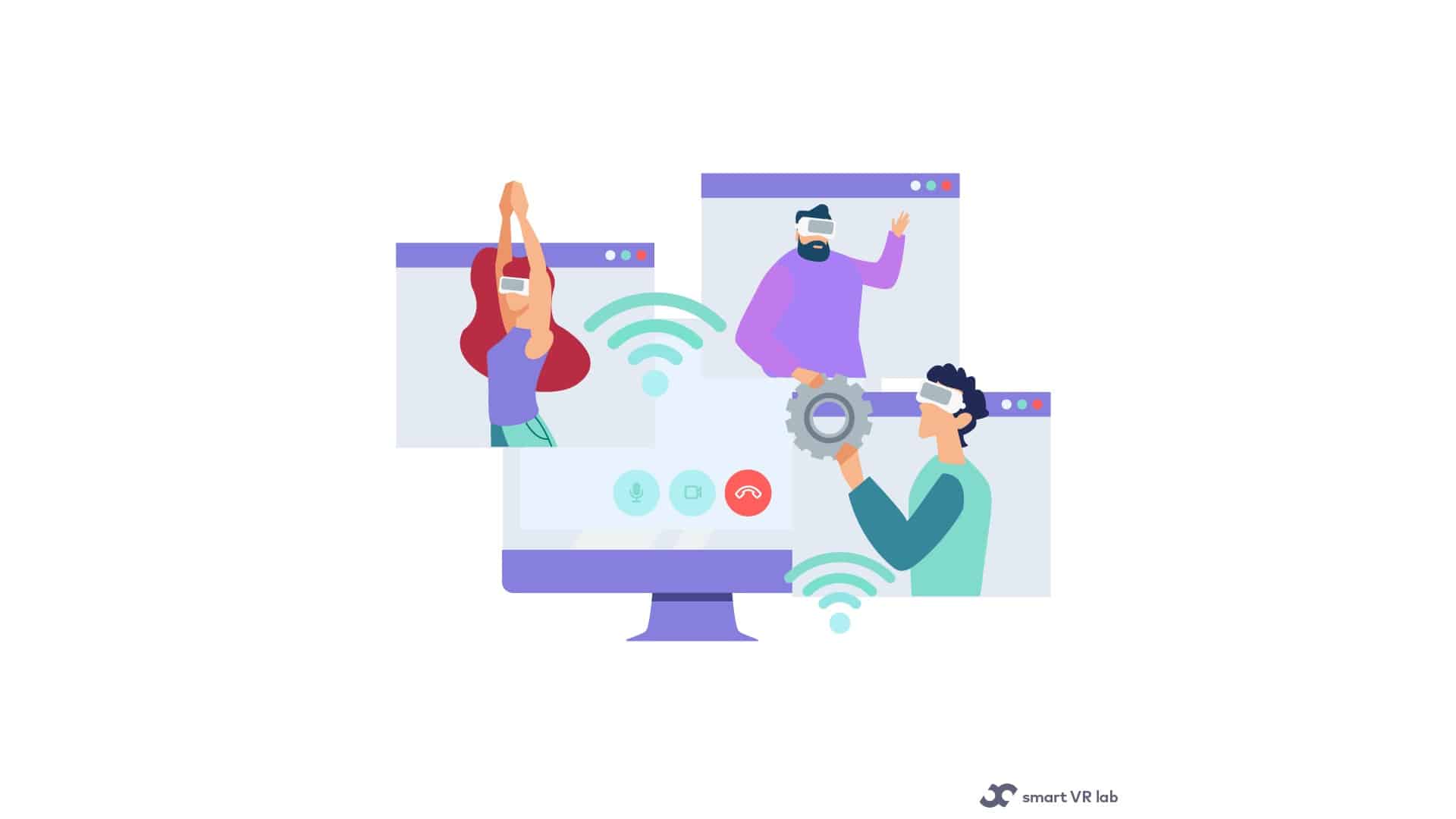When businesses make a decision on whether to invest in Virtual Reality or not, the return of investment (ROI) is one of the top deciding factors. An indirect way that VR will affect your ROI is by boosting the general workplace productivity – a factor that is closely tied to the success of your business and your profit margin and thus is well worth considering.
But how and where does Virtual Reality make the most impact? There are several key domains in which VR can have a positive influence on workplace productivity:
- Techy training
- Smart recruitment
- Remote collaboration
- 3D brainstorming & mind mapping
- Corporate wellbeing
Let’s take these five domains and have a closer look at how VR can be implemented to reap the promised benefits.
Techy Training
It is a well known fact that businesses need to train multiple employees at a time. It can become an issue, when the business does not have the capacities to house many trainees and trainings at once. This is where VR technology comes in handy: it allows for the transfer of knowledge and skills without the need of physical presence at a certain place.
For example, take Walmart as an example of success: Walmart implemented a VR training system in 2017 and is currently teaching 140,000 of its personnel using VR training annually. Of course, the complexity of VR learning comes from the cost of this technology. It may be pricey for many businesses, especially smaller ones, but in the long run, the advantages of VR training outweigh the expenses it imposes. Don’t believe us yet? Check out this article, where we discuss the ROI of VR training in 1:1 comparison of classical classroom training.
Smart Recruitment
How are you recruit-meant to recruit properly from a large number of candidates in a short time? It seems almost physically impossible to meet and test hundreds of individuals – well, fairly and in a proper manner, at least. A VR interview costs less, consumes less time and offers a new, effective approach to assessing your candidates. How?
VR can also track biometric data. The combination of pulse, eye tracking and face tracking open up cognitive and behavioural insights that were hidden from you before. The data collected act as an aid to providing effective and precise assessment of candidates’ skills and as such boosts the productivity of HR processes significantly.
Remote Collaboration
At least since the pandemic virtual meetings and remote collaborations have become a common occurrence in every business. And ever since the pandemic, we all know the difficulties that come with such meetings – keeping your employees engaged and motivated during such meetings becomes increasingly difficult and can even drive a wedge between the members of your team.
Say hello to the solution: VR enables large-scale companies to host more appealing and engaging meetings. Traditional video conferencing is not as convenient as a VR collaboration, as VR gives more space to watch the body language and experience genuine interaction with your team members.
One of the great examples of this is the VR app called Spatial.
Spatial lets you create your 3D-realistic avatar from a single selfie. Your avatar comes to life as you talk, move, and interact. This lets you sit next to each other, even from across the world. Meaning, it gives you everything real life meetings do with the advantage of possible remote collaboration.
It keeps your employees engaged, productive and motivated. As easy as that.
3D Brainstorming & Mind Mapping
Real-time 3D brainstorming & mapping virtually with colleagues can also be achieved by virtual reality apps like Noda.
Noda is your space in Virtual Reality to build and share 3D mental models – mind maps, storyboards, network or flow diagrams, project plans – to enhance your productivity, understanding and awareness. It offers the possibility to literally look at your ideas from a different angle, which makes it superior to the traditional options, plus it enables remote collaboration and interaction.
Corporate Wellbeing
The digital world brings about plenty of opportunities, but definitely also comes with its downsidesThings like loneliness, lack of communication and constant pressure from social media, are known to trigger various mental disorders, such as anxiety. VR is actually used to treat patients by immersing them into a calm, peaceful 3D environment.
The same way VR is used for patients, it can be used for employees to reduce stress, anxiety and even boost their productivity by improving their mental state. By practicing corporate wellbeing, even burnout of employees can be prevented.
There are several apps for corporate wellbeing, amongst them is Liminal VR. Liminal VR delivers emotionally moving augmented, mixed and virtual reality experiences in areas as diverse as training and simulation, sales and marketing, brand activations, education, research and development, corporate wellness and clinical applications.
VR for workplace productivity
Most companies still think using Virtual Reality for training is too expensive. But that’s because there are a lot of things that are not taken into consideration, like one of the most important attributes: its effect on productivity in the workplace. As shown above, VR can have a positive impact in many areas of your business that eventually leads to a more effective, productive and safe place for your employees to work. Want to get productive immediately? Then sign up for a free trial of our VR CMS.
Smart VR Lab develops and produces training content for businesses across multiple industries. To transform your business, simply contact Smart VR Lab for a demo and set up a meeting with our team. If you have questions on anything related to VR, you can always send us a mail to info@smartvrlab.nl
Request a VRee trial
For a free 4-week trial, demo or simply more information,please leave your email.

